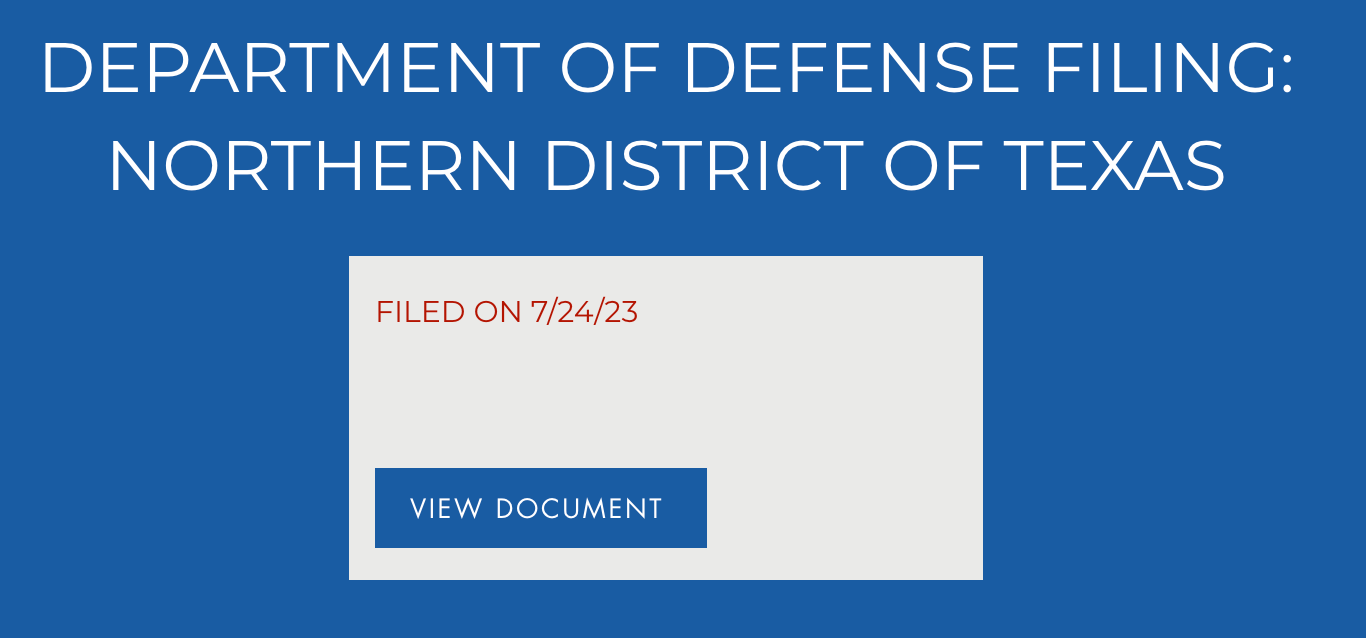Suicide is almost universally considered a selfish act and it is final. Loved ones are forced to come to terms with their loss in a sudden, abrupt manner. Memories are all that remain.
When a son or daughter kills themself slowly, loved ones can intervene. It doesn’t matter what form of self harm leads them down suicide’s path; drugs, crime, and gender affirming care will leave parents helpless. Hope can remain while we watch our young destroy themselves, but if our efforts fail, the suffering can be worse.
Loved ones will fecklessly remember the dead as they prepare to walk the green mile. It’s a hit and run in slow motion. Parents feel they are just inches away from a life saving embrace, pulling their children out of a dangerous intersection, but their limbs can’t react in time. The memories are in slow motion, with frame-by-frame high definition replays detailing the coordination failures that left parents embracing old photos. Fonder memories of the departed often get consumed by hope’s attrition. Those that remain among the living are left struggling with their culpability.
If one kills the biological self and the power of the State requires it’s citizens to participate in a ritualized manner, the State has laid claim to your thoughts and memories. If we are forced to celebrate the death of an individual with language that disguises the murder of truth, or use terms like “deadnaming” to normalize the truth of murder, then we are in a battle between good and evil.
Gender reassignment surgery is a form of slow motion suicide and support for the concept of gender identity and forced speech is evil. Never before in man’s long history have individuals embraced the idea that they could kill their gender, the most fundamental defining characteristic of their biological self, and rise again as a new person. If suicide is selfish, then the view that one could be reborn in a new body is narcissistically messianic.
The concept mocks science and religion. Ironically, even though progressives calling for permanent, irreversible medical procedures often intend to mock religion, they rarely recognize they are laughing in the face of reasoned science.

Legal underpinnings.
Bostock v. Clayton was the 6-3 Supreme Court ruling and the legal underpinning for expansive changes in DEIA federal government policies. As usual, instead of a measured response, liberals have pressed forward developing bureaucratic support mechanisms to expand on the limited scope of this ruling.
The individual represented in Bostock v. Clayton was not transgender. The case focused on discriminatory activity that occurred after Bostock began participating in a gay softball league. This is very different than an employer forcing individuals in the workplace to acknowledge another person’s desire to be identified as male or female.
Title VII prohibits employers from discriminating against any individual because of such individual’s race, color, religion, sex, or national origin.
The majority opinion authored by Supreme Court Justice Neil Gorsuch relied upon the ordinary public meaning of the terms “because of” and “sex”. The case was dealing with discriminatory practice that was because of sex. The court chose to expand on sex’s definition to include sexual orientation, a protected class not included in 1964’s civil rights legislation; however, they did comment that they understood that Title VII was never envisioned to include sexual orientation in 1964. The key questions were:
Did discrimination occur?
Was it based on the commonly accepted definition of sex?
We can quibble about the second question and the court’s willingness to stray from the literal interpretation of legislation, but given the facts surrounding the case, I agree with the ruling. Bostock was the subject of discriminatory acts. Of the two questions, much more weight appears to have been given to the question of discriminatory behavior, vice the definition of protected classes.
I am generally in favor of measures that degrade the concept of protected classes. The smallest minority is the individual, and Constitutionally, the individual is the only minority to which we owe deference. It might be wishful thinking on my part, but perhaps this is a signal that future cases of discriminatory action will be given latitude, even if the definition of protected class must be expanded to include a more colloquial meaning. Let me provide an example.
Imagine a world where a whole class of workers were discriminated against because they refused to take an experimental gene therapy being mandated as a result of an Executive Order (EO). The new workplace requirement was not legislated, nor was there a public comment period offered for the proposed changes. Many employees refused because of deeply held religious beliefs, while some were concerned that their Constitutional right of self-ownership was violated.
In this thought experiment, the employees appear to have been discriminated against based on the perception of disability. In fact, existing Supreme Court case law supports the legal concept of perceived disability. Employers began to view the employees as disabled because they were potentially more susceptible to a particular ailment because of their refusal to take the gene therapy. Title VII forbids discrimination on the basis of disability, and yet, it appears to have occurred.
Would the Supreme Court provide an opinion consistent with Bostock v. Clayton?
If only there were a challenge of this sort to test the waters…

Administrative overreach in response.
The right legal case filed at the right time in the right court and narrowly focused on a specific issue is easier than slogging through the administrative state’s morass of bureaucracy to change an illegal policy. Bureaucrats know this all too well, and they have weaponized the administrative state to ensure the cost of litigating is as damaging as possible.
That is why an executive order should have far more oversight than legislation. The legislature is the only Constitutional way to enact law. Presidents from both parties continue to use executive orders to enact new policy, but these dictates continue to creep beyond limited measures intended to streamline government efficiency or protect the integrity of the institutions. They enforce disciplinary measures for non-compliance, have administrative effects beyond their application, and create real-world economic and legal implications. That makes them a law, no matter how an order is manipulatively worded.
Bostock v. Clayton paved the way for executive orders that went beyond the scope of the lawsuit. The case never adjudicated on transgender claims that pronouns and speech should be adjusted to accommodate their personal reality, nor did it comment on the validity of gender fluidity. It certainly did not touch on the scientifically erroneous claim that an individual is capable of becoming another gender.
The ruling did correctly identify discrimination, but it was never intended to justify a new infrastructure of policies that would have required legislative action to have been legal. Even if EOs were an acceptable way to accomplish policy goals, two key Supreme Court cases are poised to have profound impact on future efforts by the administrative state to create policy.
Loper Bright Enterprises v. Raimondo and Relentless v. Department of Commerce are challenging the 1984 Supreme Court opinion issued by Justice John Paul Stephens in Chevron USA v. National Resource defense Council. The 1984 opinion acknowledged that Article I of the Constitution reaffirmed the Congress’ responsibility for legislative action but the opinion found that “agencies may… properly rely upon the incumbent administration’s views of wise policy” in “reasonably” defining any ambiguity in legislation.
The agencies are allowed to help define policy when it can be reasonably assessed that it is in line with the administration’s goals.
Who interprets the ambiguities?
Who determines whether new policy changes is in accordance with the administration’s views?
Who determines that the legislature agrees with the new policies?
Who is responsible when mistakes are made?
It is no wonder the deep state has ballooned out of control. For the first time in 40 years, our Supreme Court has an opportunity to help average Americans regain some control over the size and scope of the government. Let’s hope our Justices are wise enough to consider the second order effects of Justice John Paul Stephen’s opinion in Chevron USA v. National Resource defense Council.
Executive orders help bypass legislative responsibility.
There are eight EOs that provide the framework for the Department of Health and Human Services (HHS) Diversity, Equity, Inclusion, and Accessibility Strategic Plan 2022. EOs 139881, 140752 are the key EOs responsible for new policy being administered in almost every agency and department. EOs 139943, 140314, 140205, 140456, and 140497 also contribute to the programmatic structure.
But how are agencies expected to implement and monitor progress on DEIA initiatives?
HHS has the most detailed plan available to the public and that is not by accident. They are taking the lead because HHS can provide a health and wellness veneer to their incredibly destructive transgender policies. They are the science! Specifically, there are five key measures.
Demonstrated focus on increasing diversity within HHS.
Improved retention and opportunity creation.
Enhanced climate for equity, inclusion, and accessibility.
Leadership-driven DEIA cultural reform.
Strengthened DEIA insights through improved data.
A huge effort and great cost was put into developing the plan, and it is important to remember, none of it was a result of legislative action calling for far-reaching changes to how our federal government uses human resources and spends its taxpayer-funded budget. Every dollar spent on this program is a dollar reallocated from another program.
The five pillars are more than just platitudes. There are tools being used to ensure there is steady progress being made and those tools are available to every federal department.
Demonstrating focus.
There are DEIA “performance elements” (tools) being used to demonstrate focus on mission goals. The President’s Management Agenda (PMA) categorizes them broadly as equity, effectiveness, and accountability. Definitions are left purposely vague to allow for greater latitude in the “demonstration” aspect of DEIA, but the PMA requires a sustained, multi-year, government-wide approach that can be measured.
EO 140208 is the key driver in coalescing the “whole of government” approach to DEIA. It names key department and agency heads, and quite a few executive office positions that serve on the advisory council. It ensures that messaging gets pushed down somewhat uniformly, regardless of the formless nature of DEIA’s definition. It is also important to emphasize, EO 14020 specifically requires every agency to self-fund DEIA requirements imposed by the new government structures.
They are stealing taxpayer funded budget from the legislatively designated work of these agencies and departments to ensure DEIA is pursued, despite being based on one Supreme Court case adjudicating on discrimination. Funding is the responsibility of Congress.
The executive office, as was the case during the response to COVID, has collaborated early with the EEOC and Diversity and Inclusion (D&I) offices across the federal government. A reasonable person would assume there is a need to collaborate. EEO enforcement is another tool to demonstrate focus and it ensures any new measures don’t conflict with existing EEO, harassment and D&I guidance; however, in practice the purpose of the coordination and the outcome stemming from executive coordination has shown itself to be very different.
During COVID, EEO complaints increased dramatically across every federal agency and department, and the EEOC appears to have received direct orders from very senior members of the administration. EEOC responses related to discriminatory practices related to COVID-19, have a cut-and-paste aspect to their determinations. EEO related matters will be the subject of a future Substack, but without belaboring the points, individual and class action EEO complaints should be adjudicated on a case-by-case basis.
How do they show programmatic progress?
The PMA and subordinate orders outline other measures needed to show programmatic success. Management directives, employee climate surveys, and equal opportunity recruitment programs are tools that contribute to all five pillars.
Pillar I: Demonstrate Focus
Pillar II: Build Stakeholder Engagement
Pillar II: Lead with Conviction
Pillar IV: Improve Programming
Pillar V: Data Collection, Sharing, and Intersectional Analysis
Initially they message the workforce directly and indirectly regarding intent and scope of the program. Messaging is often erroneously defined as a metric of success, but broad expectations and information operations associated with each pillar are difficult to standardize and measure.
Mushy measures often damage programmatic success, but I suspect the broad expectations are by design. There are an army of useful idiots willing to enact unconstitutional measures and the architects of these unconstitutional policies know they only need to nudge them to act. It naturally leads to fantastic overreach by enthusiastic bureaucrats seeking favor from shoulder shrugging, just-following-orders automatons serving in administrative state executive positions.
There is a much larger threat looming. They intend to collect data.
You might be asking yourself, so what? Right?
Of course they need to collect data to measure programs. The PMA has five pillars and data collection is a foundation by which they grade success or failure, right?
The PMA calls for…
…a data driven approach to include bench marking with other agencies to pursue high quality data integrity to perform intersectional analysis.
There are two huge problems and a myriad of other second order effects. The data collection plans have been formalized using EO 13994, which was the justification used during COVID to collect vaccination status and Personal Health Information (PHI). It allowed the federal government to make lists of employees with deeply held religious beliefs in conflict with vaccine mandates. The Federal Records Act disallows destruction of federal records, potentially permitting politically driven retaliation against those who expressed conscientious dissent.
Although the officials responsible for the COVID response promised that one’s PHI would not be shared, subsequently this was proven to be a bald-faced lie. In the case of DEIA, the federal government states clearly that they will share information about DEIA participation, implementation, and support.
If you are non-compliant with, skeptical of, or religiously opposed to pronouns and any other dictates included in their intersectional analysis… You will be the errant data point worthy of extra scrutiny.
HHS and government agencies know all too well, that there are two categories of measurement, and your noncompliance will simply be a blip on their quantitative measures of performance. Rest assured however, they will seek to add your errant data to their qualitative analysis to ensure progress is achieved.
Measures of performance
Measures of performance are almost purely quantitative. Did a functionary complete a task or can we count the number of times a specific action was undertaken? Performance measures don’t measure impact, they only indicate if something occurred.
A DEIA metric has been included as a criteria for promotion in every federal government employee’s yearly performance. That means every employee must show “progress” in advancing DEIA. Given the fungible nature of DEIA, and if we temporarily ignore the religious conflicts posed by some of the mandatory DEIA requirements, this often means employees provide a list of tasks that have been completed, rather than the impact from those actions.
Employees are coerced into listing their DEIA accomplishments, often when it is next to impossible to measure the impact of those actions. Managers list implementation of employee climate surveys and their inclusion of DEIA focused questions, directives published to subordinates, and other publications. Subordinates do the same, and the pattern is repeated at each subordinate level. We are left with a cacophony of messaging spurting out from every corner of the workforce. The noise is not commensurate with the threat posed by discriminatory behavior. If anything, we have senior managers so frightened of the possibility of being labeled a racist, transphobe, or whatever goofy slur is currently in vogue… We quickly discover that the inmates are running the prison.
Every employee is involuntarily required to chant in unison, preach to the masses, and lay bare their unconscious bias, microagressions, and other pseudoscientific transgressions. It is like a Maoist struggle session where rank and file proletariat struggle to perform grandiose yet meaningless self-abasing acts in order to eventually rise in the ranks and enjoy … some well-earned unearned privilege.
… The trick is striking a balance between the right amount of public shame but nothing so unconsciously subversive that one finds themselves irretrievably bound for the re-education camps.
Some respect must be given to our 21st century Maoists. It takes impressive intellectual leaps to consider yourself part of the revolution while maintaining the right degree of thought conformity. With the end of mask mandates, our current day commies can no longer rely on the benefit of government issued outerwear to signal allegiance!
With this much extraneous noise, every once in a while you can get a qualitative assessment of that performance measure. Let me give you an example from a federal government employee responding to a post asking that everyone’s New Year resolution include a renewed focus on DEIA…
From the vast amount of DEIA “content” being pushed out lately, I assume there must be hundreds of incidents of interpersonal conflict throughout the agency that this Maoist haranguing is meant to address… Which is funny, because the few interpersonal issues I’ve observed over the course of my career could have been solved with basic politeness, respect, and common sense, with recourse to EEO if necessary. That used to work just fine. We don’t need an additional bureaucracy of Thought Police constantly pushing a top-down program of neo-Marxist ideological indoctrination onto a captive work force that is simply trying to do its job. We don’t need to justify our personal beliefs, or be coerced into labeling ourselves “allies,” or putting various non-American flags into our signature blocks in order to display our “solidarity.” And we definitely shouldn’t need to show our ideological conformity in order to get promoted. All that is just downright un-American. So I propose a different resolution for 2024. Let’s all focus on MISSION and being good at our JOBS. That’s why we are here. Happy new year!
Immediate impact. Managers responsible for monitoring our News Year resolutions should happily include a bullet point in their yearly evaluation that looks something like this…
My DEIA mentorship of junior subordinate officers resulted in one employee drafting a call to action intended to drive mission. Hundreds of diverse employees from multi-disciplinary tracks responded and intend to support this DEIA catalyzed focus on job performance and pride in work.
At least one person was so frustrated by the incessant DEIA buzzing that he took the risk of popping his head above cover and expressing sincere frustration with management. That doesn’t usually happen.
Even the bravest of us often wait until it is too late to voice concern. No one, not even the refuseniks from Feds for Freedom, like being confrontational. Well… that is mostly true… Most government employees got into government service because they like stability. That isn’t a bad thing. Government should be filled with a large contingent of people willing to ensure it remains stable for the people being served; however, there is a problem with this model.
When top-down, poorly planned, and inherently divisive policies are introduced en masse, the weight of poor management and fear of dissent slowly diminishes the effectiveness of the institutions. It is like slow motion governmental suicide. It has been going on for decades. EOs and legislative inaction are main drivers, but lackluster agency leadership has exacerbated the problem.
Measures of effectiveness.
If you have made it this far though this Substack, I suspect you are one of those errant data points in our government’s intersectional maturity models, being used to measure impact. Maturity models are goal-driven measuring tools that can evaluate qualitative data to assess long-term performance. It incorporates continuous testing, feedback, and implementation cycles and allows for analysis of individual, team, and project milestones.
The thing is… They really want to pound that errant data point back into the curve overtime. That is how a maturity model works… Your non-compliance was part of the baseline, but now managers have to show how they and the other red data points dragged that one ugly bit of data back into the acceptable curve. It is how they show their impact and effectiveness.
If performance measures were the struggle sessions, then successful completion of reeducation might be a measure of effectiveness. There is a Chinese idiom, 杀鸡儆猴, sometimes you have to kill a chicken to show the monkeys.
You can’t measure how one thinks, or if thinking changed. Messaging is not effective unless you know that behavior changed. Squishy things get squishy measures of impact. So what is left?
Disciplinary action.
The bloodier the chicken, the more the monkeys get in line. If COVID offers any learning points, it is the lesson that the threat of job loss successfully convinced people to take an untested gene therapy, potentially damaging their health, fertility, and their children. It doesn’t bode well for those of us hoping our colleagues will stand firm against forced pronoun usage.
With regard to pronouns, one must keep in mind, we are talking about use of language in the third person.
She/her/hers
He/him/his
They/them/theirs
Ze/hir/hirs
Xe/xem/xyrs
Ver/vir/vis
Te/tem/ter
E/em/eirs
We don’t use third person pronouns when the subject of the conversation is present. Third person is used when we are having a chat with folks at the water cooler. So, if you happen to misgender someone within earshot of pronoun embracing, science deniers lurking nearby, you could be held accountable for your private discussion with individuals who know the difference between a man and a woman.
Disciplinary measures are the best way a program based on a malleable foundation can show concrete gains. Remember, the goal is to root out and change biased behavior. Even though the published DEIA goals include things like establishing employee resource groups and increasing diversity hires, none of those measures identify and eliminate discriminatory behavior. USA Jobs is a tool to increase diversity hires and provides a quantitative measure of dubious value, but it is a measure of performance. Resource groups have been weaponized like brown shirts to help identify errant non-allies, but they don’t have power to correct the alleged problem.
The State has weaponized the bureaucracy against itself. The tapestry of independent thought, varied backgrounds and experience, and religious differences are under attack.
If our young are killing themselves slowly with gender affirming care our state has been killing itself with the weight of decades of illegal and cumbersome policy created without legislative action or proper oversight.
It is another example of executive overreach resulting in Constitutional violations.
First Amendment Violations
Establishment of pronoun policy and disciplinary measures for noncompliance with forced speech dictates is a Constitutional First Amendment violation. It is the ritualized celebration of suicide. The measures forced on federal departments and agencies are deliberate, methodical, and designed to circumvent the values and scrutiny of US citizens. It kills our institutions.
Forced speech is just another form of censorship; it represents one of the more insidious forms. If I am forced to acknowledge a lie, and chant it in unison with every other working age adult, I am being forced to deny reality. I must now self-censor or face retaliatory action.
More insidious, the louder people chant… the less likely our youth will recognize the fiction. It becomes part of the narrative and they become active participants. The chanting is like some demonic magical incantation seductively drawing worshippers that are either too young, too stupid, or too narcissistic to recognize the lie.
How could we blame the young for being drawn towards this siren song? They are being told they are protecting the disadvantaged, a marginalized minority group, and at no real personal cost they can be heroes and heroines. Never has it been easier to become a part of the oppressed; they must simply believe a subversive and superficial lie.
This is what happens when we spend decades celebrating and elevating the victim instead of searching for solutions with humility and compassion. We are responsible for this slow motion suicide by not acting like parents. As government employees, we have let increasingly damaging, immoral, and unconstitutional transgressions pass unpunished. If you are a government employee who loves our unique institutions, there is no time left to wait. You must dash into that busy intersection and push our government in a safer direction.
Author’s note: I had originally planned a four part series, and began drafting the essays, but realized somewhere between the third and fourth essay that this will require a fifth essay. I welcome feedback and one bit of feedback I often hear… Jim, you need to make these shorter. They are right, and I have failed again, but rest assured I take your advice seriously. I also realize that the focus of the essay series drifted as I drafted. This was meant to focus on HHS’s role, but clearly it has gone beyond that original intent.
The last in this series of essays will be the specific actions one can take to fight back. Thank you for your support.
EO 13998, Executive Order on Preventing and Combating Discrimination on the Basis of Gender Identity or Sexual Orientation, 20 January 2021.
EO 14074, Executive Order on Advancing Equality for Lesbian, Gay, Bisexual, Transgender, Queer, and Intersex Individuals, 15 June 2022.
EO 13994, Ensuring a Data-Driven Response to COVID-19 and Future High-Consequence Public Health Threats, 26 January 2021: On the surface, the inclusion of this EO in HHS DEIA strategic planning appears out of place; however, the information modeling and collection methods refined during the health countermeasure response to COVID-19 are being used in a number of new initiatives that contribute to big data, machine learning, and AI programs.
EO 14031, Advancing Equity, Justice, and Opportunity for Asian Americans, Native Hawaiians, and Pacific Islanders, 3 June 2021.
EO 14020, Executive Order on Establishment of the White House Gender Policy Council, 8 March 2021.
EO 14045, White House Initiative on Advancing Educational Equity, Excellence, and Economic Opportunity for Hispanics, 16 September 2021.
EO 14049, Executive Order 14049-White House Initiative on Advancing Educational Equity, Excellence, and Economic Opportunity for Native Americans and Strengthening Tribal Colleges and Universities, 11 October 2021.
Excerpt from EO 14020:
(f) The Council shall be led by two Co-Chairs designated by the President, one of whom shall also serve as the Executive Director of the Council (Executive Director). The Council staff shall also include a Special Assistant to the President and Senior Advisor on Gender-Based Violence and other sufficient staff as may be necessary to carry out the provisions of this order.
(g) In addition to the Co-Chairs, the Council shall consist of the following members:
(i) the Secretary of State;
(ii) the Secretary of the Treasury;
(iii) the Secretary of Defense;
(iv) the Attorney General;
(v) the Secretary of the Interior;
(vi) the Secretary of Agriculture;
(vii) the Secretary of Commerce;
(viii) the Secretary of Labor;
(ix) the Secretary of Health and Human Services;
(x) the Secretary of Housing and Urban Development;
(xi) the Secretary of Transportation;
(xii) the Secretary of Energy;
(xiii) the Secretary of Education;
(xiv) the Secretary of Veterans Affairs;
(xv) the Secretary of Homeland Security;
(xvi) the Administrator of the Environmental Protection Agency;
(xvii) the Director of the Office of Management and Budget;
(xviii) the United States Trade Representative;
(xix) the Administrator of the Small Business Administration;
(xx) the Director of National Intelligence;
(xxi) the Representative of the United States of America to the United Nations;
(xxii) the Director of the Office of Science and Technology Policy;
(xxiii) the Assistant to the President for National Security Affairs;
(xxiv) the Assistant to the President for Domestic Policy;
(xxv) the Assistant to the President for Economic Policy;
(xxvi) the Assistant to the President on National Climate;
(xxvii) the Assistant to the President on COVID-19 Response;
(xxviii) the Chief of Staff to the Vice President;
(xxix) the Chair of the Council of Economic Advisers;
(xxx) the Chair of the Council on Environmental Quality;
(xxxi) the Director of the National Science Foundation;
(xxxii) the Administrator of General Services;
(xxxiii) the Administrator of the National Aeronautics and Space Administration;
(xxxiv) the Chair of the Equal Employment Opportunity Commission;
(xxxv) the Administrator of the United States Agency for International Development;
(xxxvi) the Director of the Office of Personnel Management; and
(xxxvii) the heads of such other agencies and offices as the Co-Chairs may from time to time invite to participate.
(h) Members of the Council shall designate, within 30 days of the date of this order, a senior official within their respective agency or office who shall coordinate with the Council and who shall be responsible for overseeing the agency’s or office’s efforts to advance gender equity and equality. The Director of National Intelligence shall designate a National Intelligence Officer for Gender Equality, who shall coordinate intelligence support for the Council’s work on issues implicating national security. The Co-Chairs may coordinate subgroups consisting exclusively of Council members or their designees under this section, as appropriate.
(i) Each agency shall bear its own expenses for participating in the Council.















Dear Jesus, protect us.